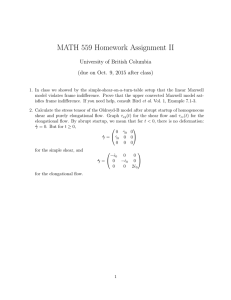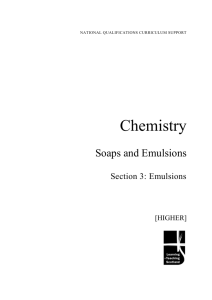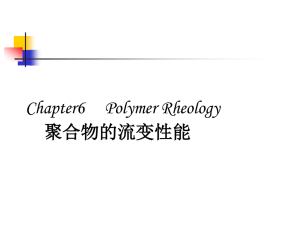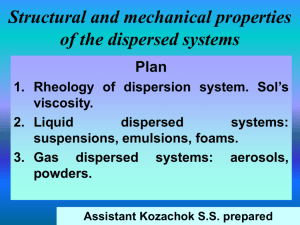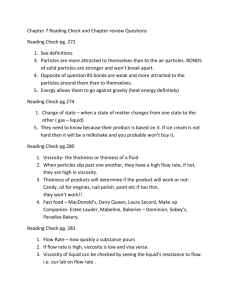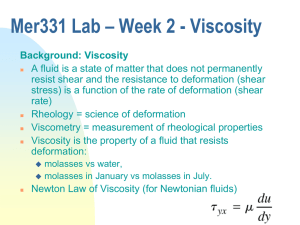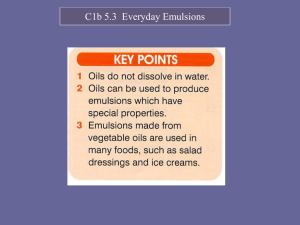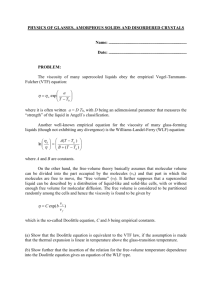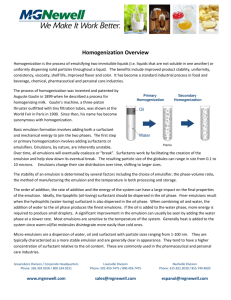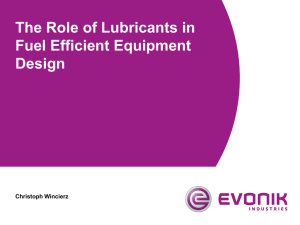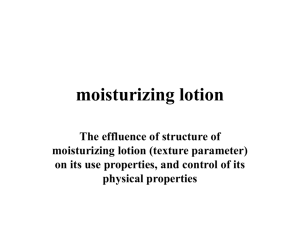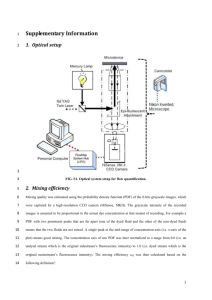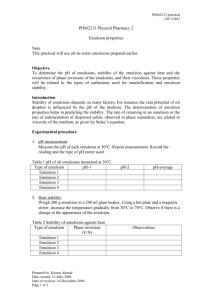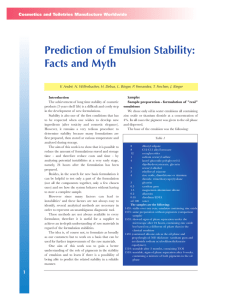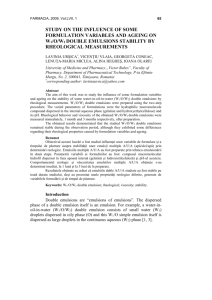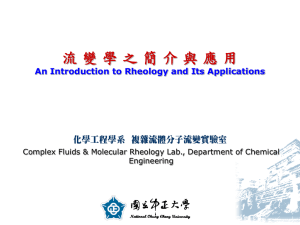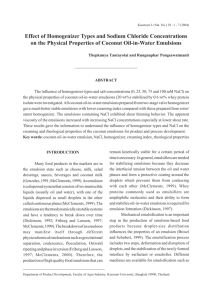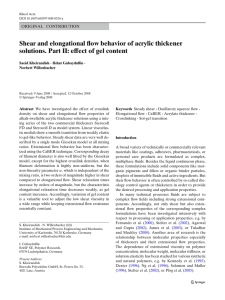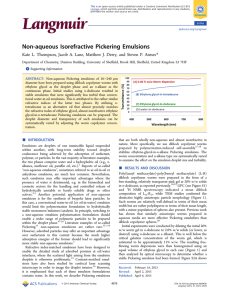Abstract-Sumer PEKER - ic-rmm1
advertisement
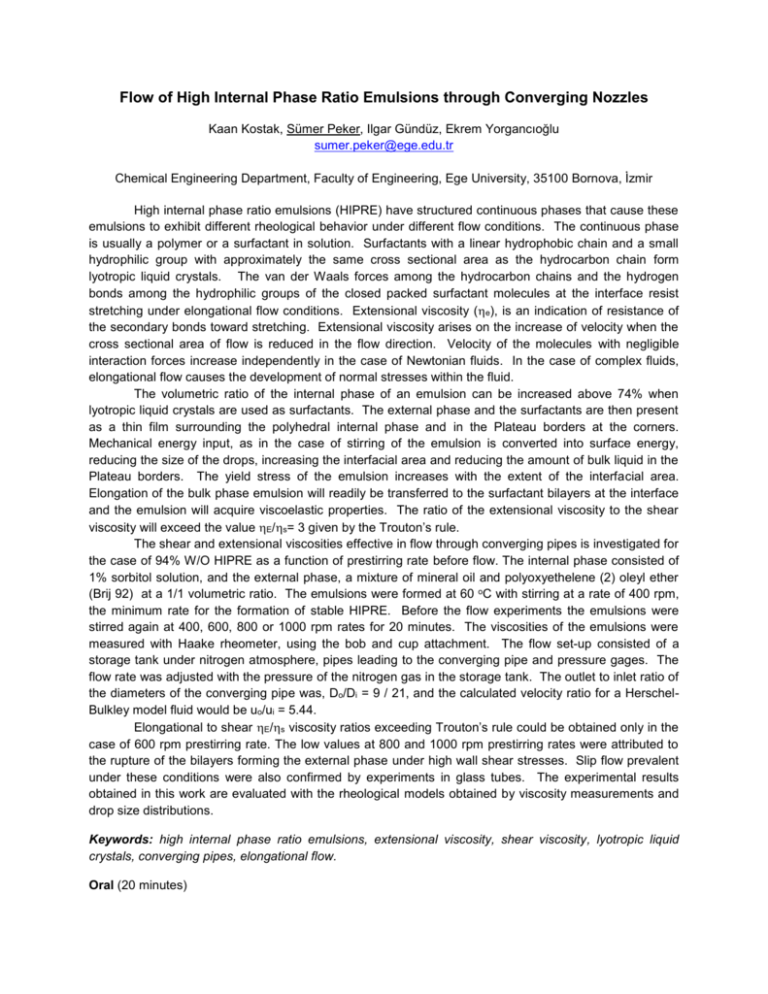
Flow of High Internal Phase Ratio Emulsions through Converging Nozzles Kaan Kostak, Sümer Peker, Ilgar Gündüz, Ekrem Yorgancıoğlu sumer.peker@ege.edu.tr Chemical Engineering Department, Faculty of Engineering, Ege University, 35100 Bornova, İzmir High internal phase ratio emulsions (HIPRE) have structured continuous phases that cause these emulsions to exhibit different rheological behavior under different flow conditions. The continuous phase is usually a polymer or a surfactant in solution. Surfactants with a linear hydrophobic chain and a small hydrophilic group with approximately the same cross sectional area as the hydrocarbon chain form lyotropic liquid crystals. The van der Waals forces among the hydrocarbon chains and the hydrogen bonds among the hydrophilic groups of the closed packed surfactant molecules at the interface resist stretching under elongational flow conditions. Extensional viscosity (e), is an indication of resistance of the secondary bonds toward stretching. Extensional viscosity arises on the increase of velocity when the cross sectional area of flow is reduced in the flow direction. Velocity of the molecules with negligible interaction forces increase independently in the case of Newtonian fluids. In the case of complex fluids, elongational flow causes the development of normal stresses within the fluid. The volumetric ratio of the internal phase of an emulsion can be increased above 74% when lyotropic liquid crystals are used as surfactants. The external phase and the surfactants are then present as a thin film surrounding the polyhedral internal phase and in the Plateau borders at the corners. Mechanical energy input, as in the case of stirring of the emulsion is converted into surface energy, reducing the size of the drops, increasing the interfacial area and reducing the amount of bulk liquid in the Plateau borders. The yield stress of the emulsion increases with the extent of the interfacial area. Elongation of the bulk phase emulsion will readily be transferred to the surfactant bilayers at the interface and the emulsion will acquire viscoelastic properties. The ratio of the extensional viscosity to the shear viscosity will exceed the value E/s= 3 given by the Trouton’s rule. The shear and extensional viscosities effective in flow through converging pipes is investigated for the case of 94% W/O HIPRE as a function of prestirring rate before flow. The internal phase consisted of 1% sorbitol solution, and the external phase, a mixture of mineral oil and polyoxyethelene (2) oleyl ether (Brij 92) at a 1/1 volumetric ratio. The emulsions were formed at 60 oC with stirring at a rate of 400 rpm, the minimum rate for the formation of stable HIPRE. Before the flow experiments the emulsions were stirred again at 400, 600, 800 or 1000 rpm rates for 20 minutes. The viscosities of the emulsions were measured with Haake rheometer, using the bob and cup attachment. The flow set-up consisted of a storage tank under nitrogen atmosphere, pipes leading to the converging pipe and pressure gages. The flow rate was adjusted with the pressure of the nitrogen gas in the storage tank. The outlet to inlet ratio of the diameters of the converging pipe was, Do/Di = 9 / 21, and the calculated velocity ratio for a HerschelBulkley model fluid would be uo/ui = 5.44. Elongational to shear E/s viscosity ratios exceeding Trouton’s rule could be obtained only in the case of 600 rpm prestirring rate. The low values at 800 and 1000 rpm prestirring rates were attributed to the rupture of the bilayers forming the external phase under high wall shear stresses. Slip flow prevalent under these conditions were also confirmed by experiments in glass tubes. The experimental results obtained in this work are evaluated with the rheological models obtained by viscosity measurements and drop size distributions. Keywords: high internal phase ratio emulsions, extensional viscosity, shear viscosity, lyotropic liquid crystals, converging pipes, elongational flow. Oral (20 minutes)

